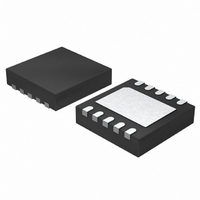LT1913EDD#PBF Linear Technology, LT1913EDD#PBF Datasheet - Page 10

LT1913EDD#PBF
Manufacturer Part Number
LT1913EDD#PBF
Description
IC REG STEP DOWN 3.5A 10-DFN
Manufacturer
Linear Technology
Type
Step-Down (Buck)r
Datasheet
1.LT1913EDDPBF.pdf
(24 pages)
Specifications of LT1913EDD#PBF
Internal Switch(s)
Yes
Synchronous Rectifier
No
Number Of Outputs
1
Voltage - Output
0.79 ~ 25 V
Current - Output
3.5A
Frequency - Switching
200kHz ~ 2.4MHz
Voltage - Input
3.6 ~ 25 V
Operating Temperature
-40°C ~ 125°C
Mounting Type
Surface Mount
Package / Case
10-DFN
Primary Input Voltage
25V
No. Of Outputs
1
Output Voltage
25V
Output Current
3.5A
No. Of Pins
10
Operating Temperature Range
-40°C To +125°C
Msl
MSL 1 - Unlimited
Rohs Compliant
Yes
Lead Free Status / RoHS Status
Lead free / RoHS Compliant
Power - Output
-
Available stocks
Company
Part Number
Manufacturer
Quantity
Price
APPLICATIONS INFORMATION
LT1913
FB Resistor Network
The output voltage is programmed with a resistor divider
between the output and the FB pin. Choose the 1% resis-
tors according to:
Reference designators refer to the Block Diagram.
Setting the Switching Frequency
The LT1913 uses a constant frequency PWM architecture
that can be programmed to switch from 200kHz to 2.4MHz
by using a resistor tied from the RT pin to ground. A table
showing the necessary RT value for a desired switching
frequency is in Figure 1.
Operating Frequency Tradeoffs
Selection of the operating frequency is a tradeoff between
effi ciency, component size, minimum dropout voltage, and
maximum input voltage. The advantage of high frequency
operation is that smaller inductor and capacitor values may
be used. The disadvantages are lower effi ciency, lower
maximum input voltage, and higher dropout voltage. The
highest acceptable switching frequency (f
given application can be calculated as follows:
10
R1= R2
f
SW MAX
SWITCHING FREQUENCY (MHz)
(
Figure 1. Switching Frequency vs. R
) =
0.79V
V
OUT
t
0.2
0.3
0.4
0.5
0.6
0.7
0.8
0.9
1.0
1.2
1.4
1.6
1.8
2.0
2.2
2.4
ON MIN
(
– 1
) V
V
(
D
+ V
D
+ V
OUT
IN
– V
SW
R
)
T
T
VALUE (kΩ)
Value
SW(MAX)
78.7
63.4
53.6
45.3
39.2
26.7
22.1
18.2
12.7
10.7
9.09
215
140
100
34
15
) for a
where V
voltage, V
internal switch drop (~0.5V at max load). This equation
shows that slower switching frequency is necessary to
safely accommodate high V
in the next section, lower frequency allows a lower dropout
voltage. The reason input voltage range depends on the
switching frequency is because the LT1913 switch has fi nite
minimum on and off times. The switch can turn on for a
minimum of ~150ns and turn off for a minimum of ~150ns.
Typical minimum on time at 25°C is 80ns. This means that
the minimum and maximum duty cycles are:
where f
minimum switch on time (~150ns), and the t
the minimum switch off time (~150ns). These equations
show that duty cycle range increases when switching
frequency is decreased.
A good choice of switching frequency should allow ad-
equate input voltage range (see next section) and keep
the inductor and capacitor values small.
Input Voltage Range
The maximum input voltage for LT1913 applications
depends on switching frequency and Absolute Maxi-
mum Ratings of the V
respectively).
While the output is in start-up, short-circuit, or other
overload conditions, the switching frequency should be
chosen according to the following equation:
where V
V
(~0.5V), V
load), f
t
a higher switching frequency will depress the maximum
ON(MIN)
OUT
DC
DC
V
IN MAX
MIN
MAX
is the output voltage, V
(
SW
SW
IN
IN(MAX)
is the minimum switch on time (~100ns). Note that
D
= f
= 1– f
SW
is the typical input voltage, V
) =
is the switching frequency, the t
is the switching frequency (set by R
is the catch diode drop (~0.5V) and V
SW
is the internal switch drop (~0.5V at max
f
SW
V
t
is the maximum operating input voltage,
SW
ON MIN
OUT
t
(
ON MIN
t
OFF MIN
+ V
(
IN
)
(
D
and BOOST pins (25V and 50V
)
– V
)
IN
/V
D
D
OUT
+ V
is the catch diode drop
SW
ratio. Also, as shown
OUT
ON(MIN)
is the output
OFF(MIN)
SW
T
), and
is the
is the
1913f
is













